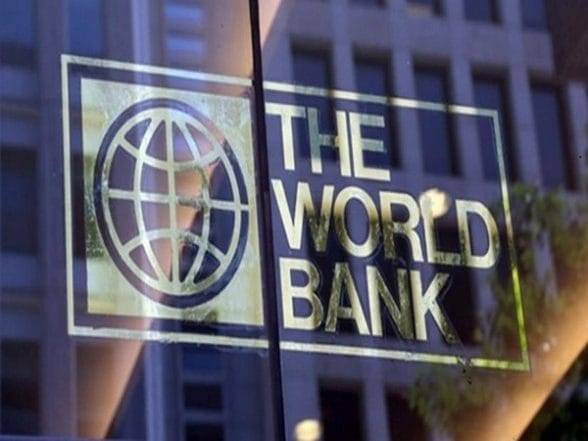Main Points In Hindi (मुख्य बातें – हिंदी में)
-
कमोडिटी की कीमतों में गिरावट: विश्व बैंक ने बताया है कि अंतरराष्ट्रीय बाजारों में कमोडिटी की कीमतें 2025 में 5% और 2026 में 2% कम हो जाएंगी, जो 2020 के बाद से उनके सबसे निचले स्तर पर पहुँच जाएगी।
-
ऊर्जा की कीमतों में परिवर्तन: रिपोर्ट में कहा गया है कि कच्चे तेल की कीमतें 2024 में 80 डॉलर प्रति बैरल के औसत से गिरकर 2025 में 73 डॉलर और 2026 में 72 डॉलर तक पहुँचने का अनुमान है, जबकि प्राकृतिक गैस की कीमतों में वृद्धि भी देखी जा रही है।
-
भू-राजनीतिक तनाव का प्रभाव: मध्य पूर्व में युद्धों और अन्य क्षेत्रीय संघर्षों के कारण अल्पकालिक में कमोडिटी की कीमतें बढ़ सकती हैं। रिपोर्ट ने भू-राजनीतिक तनाव को ऊर्जा बाजार के लिए प्रमुख प्रभावक के रूप में उजागर किया है।
-
कृषि और धातु बाज़ार की स्थिति: कृषि जिंसों की कीमतें अनुकूल मौसम के कारण गिरावट के संकेत दे रही हैं, जिससे खाद्य कीमतों में कमी की उम्मीद है। धातु बाजार में, बुनियादी धातुओं की कीमतें स्थिर रहने की संभावना है, लेकिन कुछ गिरावट भी देखने को मिल सकती है।
- अर्थव्यवस्था पर प्रभाव: वैश्विक आर्थिक प्रोत्साहन और जलवायु परिवर्तन के कारण कीमतें ऊपर-नीचे हो सकती हैं। ओपेक+ के उत्पादन निर्णय और अन्य तेल उत्पादकों की बढ़ती उत्पादन धारणा से भी कमोडिटी की कीमतों को नियंत्रण में रखा जा सकता है।
Main Points In English(मुख्य बातें – अंग्रेज़ी में)
Here are the main points from the provided text regarding the World Bank’s commodity market outlook:
-
Price Decline Forecast: The World Bank forecasts that commodity prices will decline by 5% in 2025 and by 2% in 2026, following a 3% drop this year, reaching the lowest levels since 2020.
-
Oil Price Expectations: It is anticipated that Brent crude oil prices will average $80 per barrel in 2024, before falling to $73 in 2025 and $72 in 2026. This decline is attributed to slowing global oil demand and an increase in production capacity within OPEC+.
-
Geopolitical Risks: Increased tensions, particularly in the Middle East, may pose short-term risks that could lead to price fluctuations in commodity markets. The report emphasizes that geopolitical stress will have a significant impact on global energy prices.
-
Stable Metal and Agricultural Prices: The outlook for metal prices is relatively stable, with a slight decrease expected in 2025-26, while agricultural commodity prices are predicted to fall due to favorable weather and good harvests, potentially improving affordability in emerging markets.
- Mixed Risks Ahead: The report suggests that commodity prices face both upward and downward risks due to factors such as economic stimulus in global markets, adverse weather conditions from climate change, and production adjustments by major oil-producing countries.


Complete News In Hindi(पूरी खबर – हिंदी में)
नई दिल्ली [India]3 नवंबर (एएनआई): विश्व बैंक समूह ने अपने अक्टूबर में कहा कि अंतरराष्ट्रीय बाजारों में कमोडिटी की कीमतें 2025 में 5 प्रतिशत और 2026 में 2 प्रतिशत कम हो जाएंगी, इस साल 3 प्रतिशत की गिरावट के बाद, 2020 के बाद से अपने सबसे निचले स्तर पर पहुंच जाएगी। कमोडिटी मार्केट आउटलुक का संस्करण।
वैश्विक इकाई ने कहा कि तेल की कीमतों में गिरावट से कमोडिटी की कीमतों में गिरावट का समर्थन मिलेगा, जबकि प्राकृतिक गैस की कीमतों में बढ़ोतरी और धातुओं और कृषि वस्तुओं के लिए स्थिर दृष्टिकोण समग्र गिरावट को कम कर देंगे।
यह भी पढ़ें | एनएचएआई ने द्वारका एक्सप्रेसवे पर देश के पहले मल्टी-लेन फ्री फ्लो टोल कलेक्शन के लिए बैंकों से आवेदन मांगे हैं।
इसमें कहा गया है कि ब्रेंट कच्चे तेल की कीमतें 2025 में 73 अमेरिकी डॉलर और 2026 में 72 अमेरिकी डॉलर तक गिरने से पहले 2024 में औसतन 80 अमेरिकी डॉलर प्रति बैरल होने की उम्मीद है।
रिपोर्ट में कहा गया है कि वार्षिक औसत तेल की कीमतों में 2022 के उच्चतम स्तर से 2026 तक लगातार चार वर्षों तक गिरावट आने की उम्मीद है और यह उनके 2021 के स्तर से थोड़ा ऊपर स्थिर हो जाएगी।
अनुमानित मूल्य में गिरावट कारकों के संयोजन को दर्शाती है, जिसमें धीमी वैश्विक तेल मांग – विशेष रूप से चीन से – विविध तेल उत्पादन और ओपेक + के भीतर आपूर्ति क्षमता में वृद्धि शामिल है।
हालाँकि, इसने इस बात पर प्रकाश डाला कि मध्य पूर्व में युद्ध बढ़ने की संभावना एक अल्पकालिक जोखिम होगी जो कीमतों को बढ़ा सकती है और अन्य कमोडिटी बाजारों को प्रभावित कर सकती है।
रिपोर्ट के अनुसार, ऊर्जा क्षेत्र अल्पावधि में मूल्य स्थितियों को प्रभावित करता है, और वैश्विक ऊर्जा बाजार भू-राजनीतिक तनाव पर बारीकी से प्रतिक्रिया देंगे।
क्षेत्रीय संघर्षों के बाद अक्टूबर 2023 और अप्रैल 2024 में तेल की कीमतें 90 अमेरिकी डॉलर प्रति बैरल से ऊपर पहुंच गईं। हालाँकि ये उछाल अक्सर अस्थायी थे, आपूर्ति संबंधी चिंताएँ कम होने के कारण वे स्थिर हो गए।
धातु बाजारों में, दृष्टिकोण अपेक्षाकृत स्थिर बना हुआ है। रिपोर्ट में कहा गया है, “धातु मूल्य सूचकांक 2025-26 में थोड़ा नीचे जाने का अनुमान है। इस वर्ष (वर्ष/वर्ष) 6 प्रतिशत बढ़ने के बाद, बेस मेटल की कीमतें 2026 में 3 प्रतिशत नरम होने से पहले अगले साल स्थिर रहने का अनुमान है।” .
मौजूदा ऊर्जा परिवर्तन से मजबूत मांग के कारण एल्युमीनियम और तांबे जैसी बेस धातुओं की कीमतों में लचीलापन देखा गया है, हालांकि वैश्विक औद्योगिक विकास में स्थिरता के बाद कीमतों में गिरावट देखी जाएगी।
इस बीच, बढ़ते भू-राजनीतिक जोखिमों और उभरती अर्थव्यवस्थाओं में केंद्रीय बैंकों की मजबूत मांग के कारण पूरे 2024 में सोने की कीमतों में काफी वृद्धि हुई है।
कई क्षेत्रों में अनुकूल मौसम देखने के बाद कृषि जिंसों की कीमतों में गिरावट देखी गई है, जिससे फसल की अच्छी पैदावार को समर्थन मिला है। रिपोर्ट में कहा गया है कि कुल मिलाकर खाद्य कीमतों में और कमी आने की उम्मीद है, जिससे उभरते बाजारों में सामर्थ्य में सुधार करने में मदद मिल सकती है।
आउटलुक में, यह कहा गया कि कमोडिटी की कीमतों में ऊपर और नीचे दोनों जोखिम देखने को मिल सकते हैं। बढ़ती वैश्विक आर्थिक प्रोत्साहन, विशेष रूप से चीन से और जलवायु परिवर्तन के कारण प्रतिकूल मौसम की स्थिति से कीमतें बढ़ सकती हैं, जबकि वैश्विक औद्योगिक गतिविधि में कमजोरी से मांग में कमी आ सकती है। पेट्रोलियम एक्सपोर्टिंग कंट्रीज प्लस (ओपेक+) के संगठन द्वारा संभावित रूप से उत्पादन में कटौती को कम करने और संयुक्त राज्य अमेरिका और ब्राजील जैसे गैर-ओपेक तेल उत्पादकों द्वारा उत्पादन में वृद्धि के साथ, आपूर्ति की स्थिति पर्याप्त बनी रह सकती है, जिससे 2026 तक कमोडिटी की कीमतों को नियंत्रण में रखा जा सकता है। (एएनआई)
(यह सिंडिकेटेड न्यूज फीड से एक असंपादित और ऑटो-जेनरेटेड कहानी है, नवीनतम स्टाफ ने सामग्री के मुख्य भाग को संशोधित या संपादित नहीं किया होगा)
Complete News In English(पूरी खबर – अंग्रेज़ी में)
New Delhi [India], November 3 (ANI): The World Bank Group stated in its October report that commodity prices in international markets are expected to decline by 5% in 2025 and by 2% in 2026, following a 3% decrease this year, reaching their lowest levels since 2020.
The global entity noted that falling oil prices will support the overall decline in commodity prices, while rising natural gas prices, along with stable trends for metals and agricultural products, will partially offset this decrease.
It is predicted that Brent crude oil prices will average $80 per barrel in 2024 before falling to $73 in 2025 and $72 in 2026.
The report indicated that annual average oil prices are expected to decline until 2026, following a peak in 2022, eventually stabilizing slightly above 2021 levels.
The expected decline in prices reflects a combination of factors, including slowing global oil demand—particularly from China—as well as increased oil production and supply capacity within OPEC+.
However, the report highlighted that the possibility of increased conflict in the Middle East poses a short-term risk that could drive prices up and impact other commodity markets.
According to the report, energy sector conditions influence prices in the short term, with global energy markets closely reacting to geopolitical tensions.
Following regional conflicts, oil prices exceeded $90 per barrel in October 2023 and April 2024. Although these spikes were often temporary, they stabilized due to easing supply concerns.
In metal markets, the outlook remains relatively stable. The report states, “The metal price index is expected to dip slightly in 2025-26. After a 6% increase this year (year-on-year), base metal prices are expected to remain steady next year before softening by 3% in 2026.”
Due to strong demand from the ongoing energy transition, prices for base metals like aluminum and copper have shown resilience, although they are expected to decline following a stabilization in global industrial growth.
Meanwhile, rising geopolitical risks and strong demand from central banks in emerging economies have led to a significant increase in gold prices throughout 2024.
After experiencing favorable weather in several regions, agricultural commodity prices have decreased, supporting good crop yields. The report suggests that food prices are expected to drop further, potentially improving affordability in emerging markets.
The outlook indicates that commodity prices may face both upward and downward risks. Increasing global economic stimuli, especially from China, and adverse weather conditions due to climate change may drive prices up, while weakness in global industrial activity could reduce demand. Additionally, potential production cuts by OPEC+ and increased output from non-OPEC oil producers like the U.S. and Brazil could keep supply conditions manageable, controlling commodity prices through 2026. (ANI)
(This is an unedited and auto-generated story from a syndicated news feed, and the latest staff has not modified or edited the content.)








